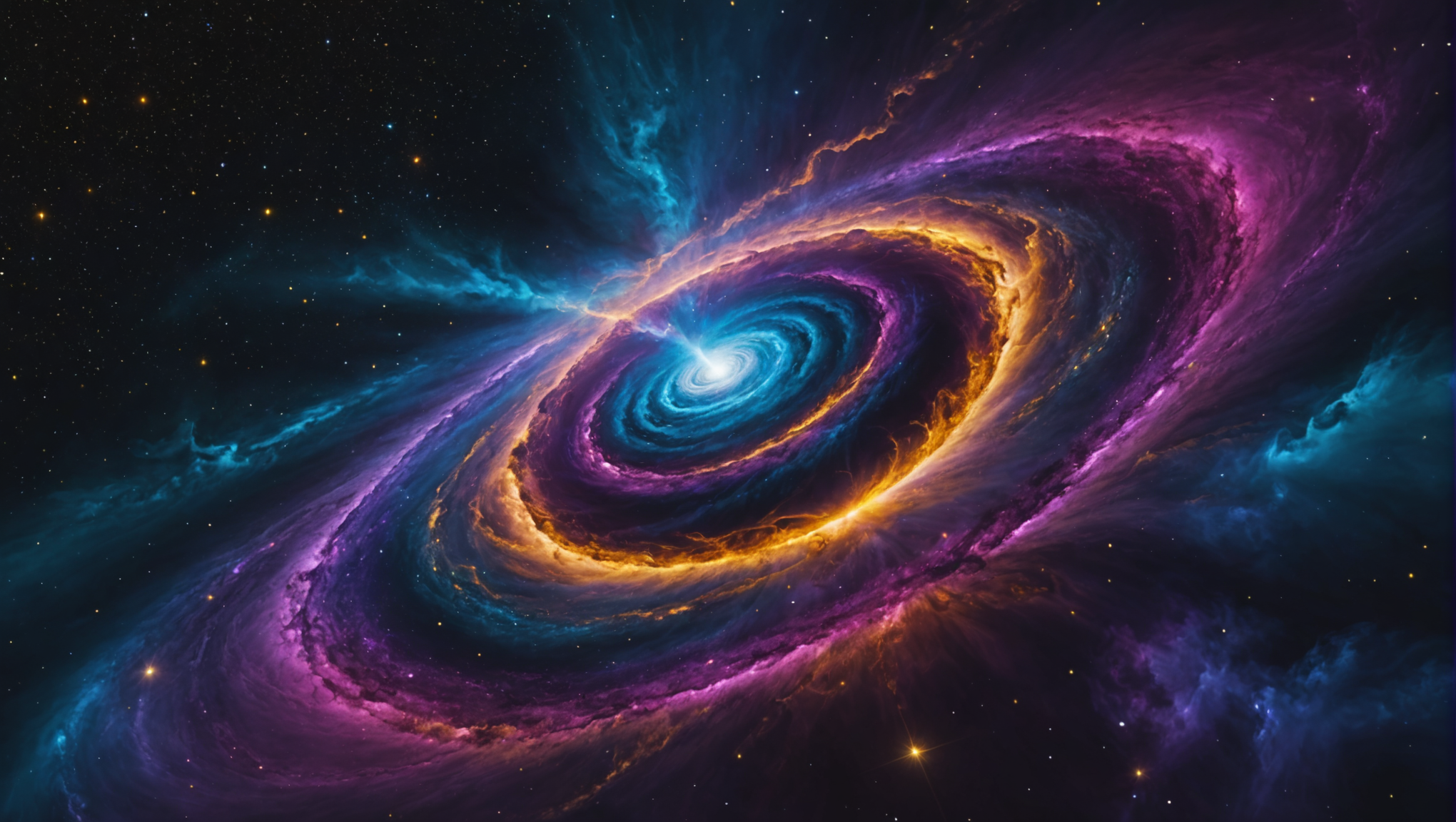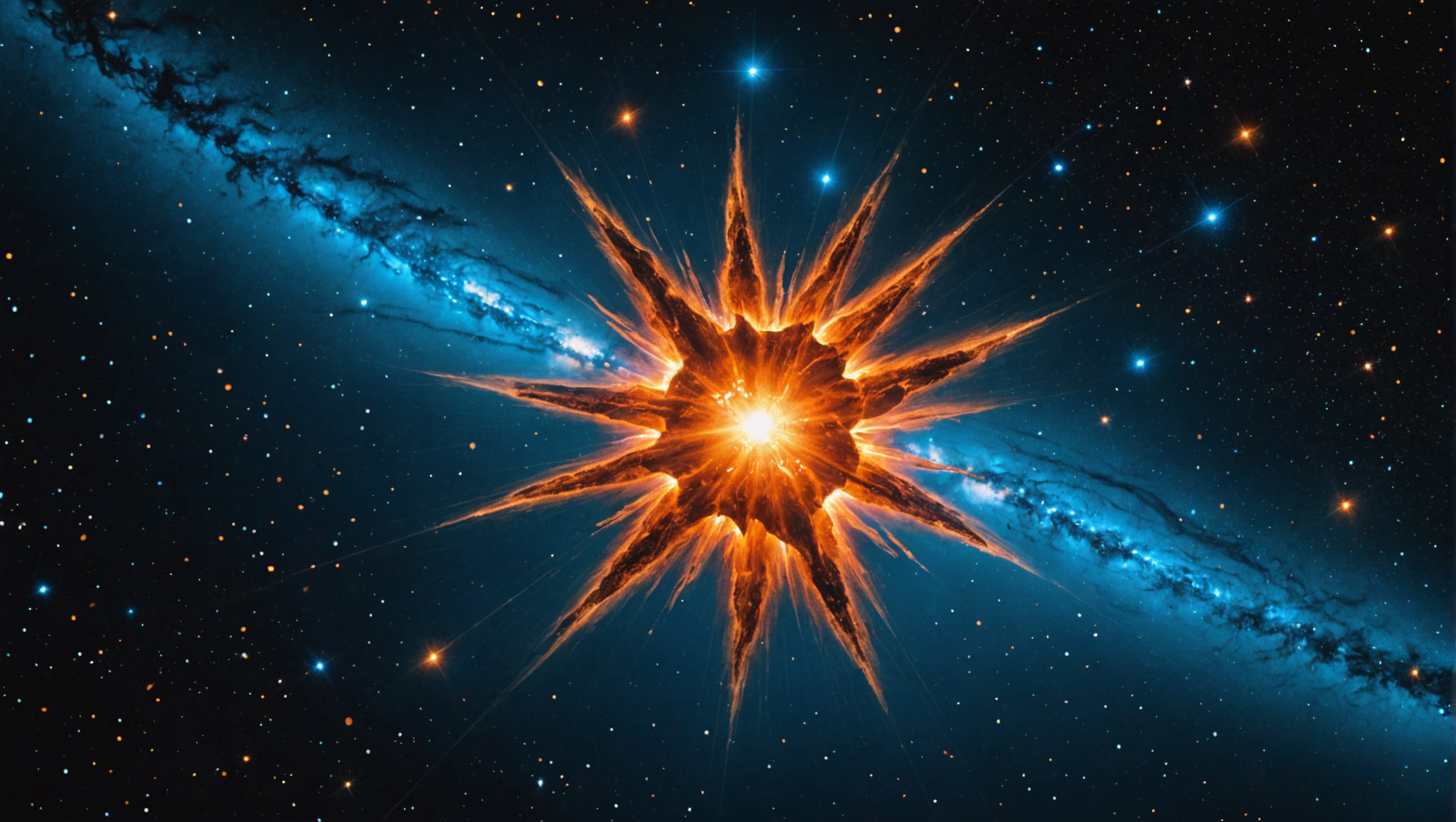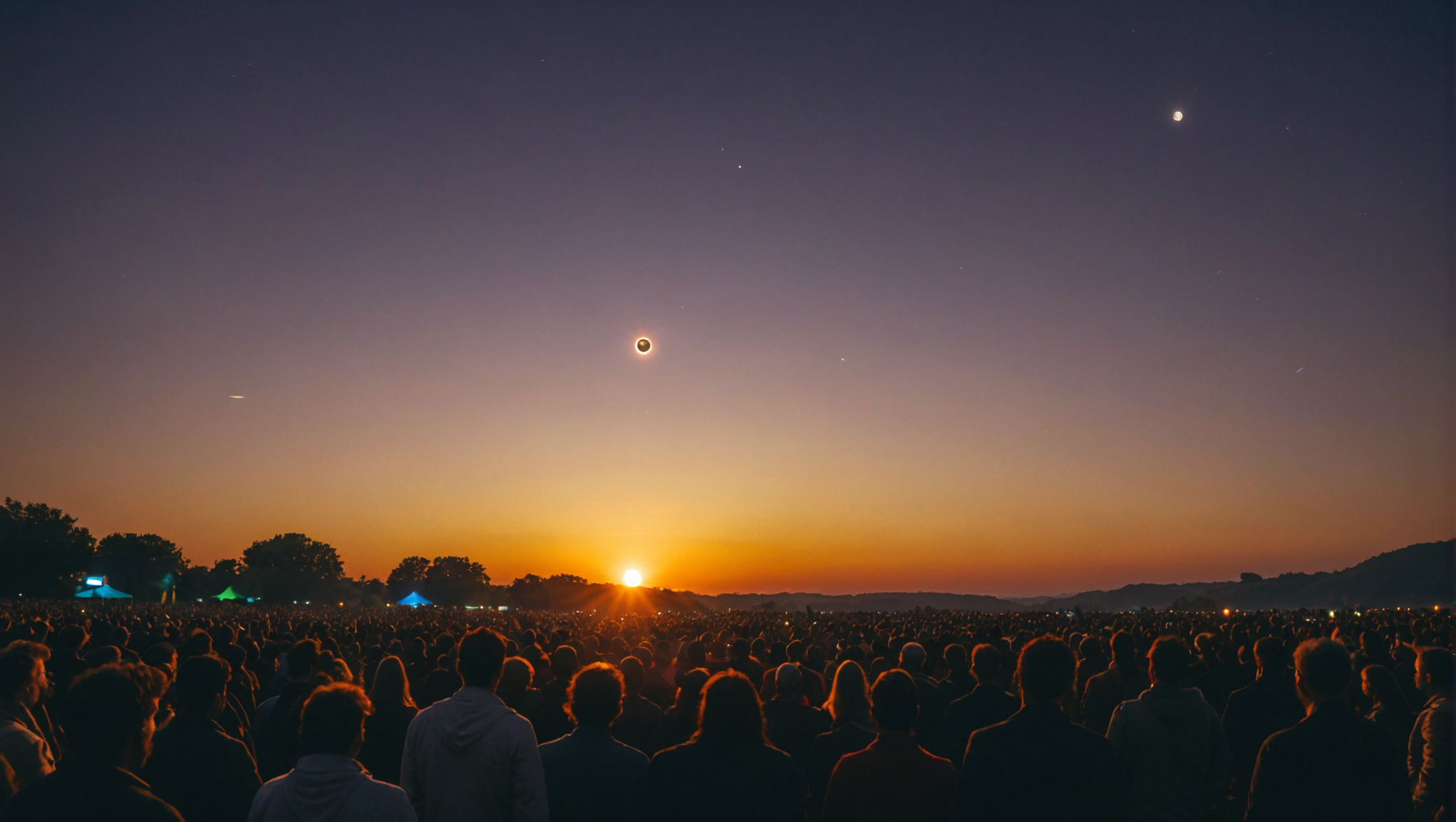
The nature of cosmic events and their significance
From the explosive power of gamma-ray bursts to the enigmatic charm of black holes, cosmic events not only challenge our understanding of the universe but also profoundly impact human culture and history. These spectacular phenomena serve as windows into the workings of the cosmos, revealing the intricate laws governing the behavior of matter, energy, and time. They provoke endless questions about our existence and connection to the universe, making them rich subjects for exploration and appreciation in both scientific and artistic realms.
At the heart of cosmic events is the fundamental principle of gravity, which orchestrates the movements of celestial bodies across the vast tapestry of space. This force, originally described by Isaac Newton and later refined by Albert Einstein’s theory of general relativity, shapes galaxies, forms stars, and can even lead to the creation of black holes. The life cycle of these massive entities is a testament to the transformative power of cosmic events, highlighting the continuous process of creation and destruction that defines the universe.
Ponder supernovae—the explosive end of massive stars. These cataclysmic events are not merely spectacular fireworks in the night sky; they are crucial for the synthesis and distribution of heavy elements throughout the galaxy. Elements such as carbon, oxygen, and iron—essential for life as we know it—are forged in the fiery cores of stars and released into the cosmos during these explosive deaths. Understanding supernovae helps us grasp how the very building blocks of planets and life itself are scattered across space, allowing for the formation of new stars and potentially habitable worlds.
Moreover, cosmic occurrences like the merger of neutron stars or the collision of black holes produce ripples in spacetime known as gravitational waves. The detection of these waves has opened an entirely new realm of astrophysical research, enabling scientists to observe and measure events previously invisible to traditional telescopes. These insights not only enhance our understanding of gravity but also challenge our perceptions of the universe’s fundamental nature.
Beyond their scientific significance, cosmic events have deeply influenced human culture, mythology, and art. Many ancient civilizations looked to the stars and attributed profound meanings to phenomena such as solar eclipses and comets. These celestial occurrences often shaped their calendars, agricultural practices, and spiritual beliefs, underscoring the deep-seated human desire to find connection and meaning in the vastness of the cosmos.
In the arena of state-of-the-art art and literature, cosmic events provide a wellspring of inspiration. Writers and artists draw upon the mystery and beauty of the universe to craft compelling narratives that explore humanity’s place in the cosmos. The imaginative realm of science fiction often reflects our insatiable curiosity about what lies beyond our earthly confines, pushing the boundaries of creativity and scientific exploration.
The study of cosmic events not only deepens our appreciation of the universe but also instills a sense of responsibility towards our planet. Understanding how celestial phenomena can influence Earth’s climate and environment encourages stewardship among humanity as we navigate the challenges posed by our rapidly changing world.
As we delve into the science behind these extraordinary occurrences, we gain insights that resonate with the very fabric of our existence. The interconnectedness of all matter in the universe becomes apparent, leading to a profound realization: the cosmic events of yesterday, today, and tomorrow not only shape the universe around us but also our understanding of life and our place within it.

Key upcoming cosmic events you won’t want to miss
On the cosmic horizon, a high number of significant events promise to captivate stargazers and astronomers alike. The convergence of celestial bodies leads to spectacular sights that not only engage our sense of wonder but also provide invaluable opportunities for scientific exploration. Among these remarkable phenomena, several upcoming events stand out for their potential visibility and impact on our understanding of the universe.
One of the most anticipated occurrences is the 2024 total solar eclipse, which will traverse parts of North America on April 8. This event will offer millions the chance to witness the moon entirely obscuring the sun, transforming daylight into a surreal twilight moment. Total solar eclipses, while rare, serve as unique educational opportunities, allowing scientists and enthusiasts alike to observe phenomena like the sun’s corona, which is not visible during regular daylight. As we gather to experience the awe of totality, the event not only acts as a spectacle but also becomes a critical moment for studying solar dynamics, including solar flares and coronal mass ejections that may occur during the eclipse’s fleeting minutes.
In addition to solar eclipses, expect increased meteor activity with the peak of the Perseids meteor shower around August 12-13. Known for their bright, colorful meteors, this annual shower is a favorite among skywatchers. Originating from Comet Swift-Tuttle, the Perseids can offer dazzling displays of shooting stars, with rates often exceeding 60 meteors per hour under optimal conditions. What makes this annual event particularly exciting is the opportunity to connect with the remnants of the early solar system, as each meteor is essentially a small piece of debris burning up in Earth’s atmosphere. Robust public interest in meteor showers often cultivates a sense of community, prompting gatherings as people share the thrill of hunting for “shooting stars.”
Equally noteworthy are the planetary alignments, when several planets line up in close proximity in the night sky. Such alignments can create stunning visual spectacles as celestial bodies gracing the night sky combine to form a “parade” of planets, visible to the naked eye in a breathtaking display. One such anticipated alignment is set for 2030, which will feature five visible planets aligned in the evening sky. The sheer beauty and rarity of these events encapsulates the movements of our solar system, encouraging individuals to gaze upward in appreciation of the intricacies of planetary dynamics.
Fast forward to the luminous displays of the August 2024 conjunction of Venus and Mars, where both planets will appear exceptionally close together in the western sky. This event offers breathtaking opportunities for astrophotography and serves as a reminder of the celestial choreography at play within our solar neighborhood. The vivid contrast of Mars’s rusty hue and Venus’s bright brilliance will undoubtedly leave an imprint on those fortunate enough to observe this proximity.
Beyond the planetary alignments and annual meteor showers, scientists eagerly await the arrival of the DART (Double Asteroid Redirection Test) mission results. Scheduled for execution soon, this mission aims to evaluate the potential for asteroid deflection—a critical endeavor given that certain near-Earth asteroids could pose threats to our planet. As we monitor the results of this innovative mission, it enhances public understanding and awareness of planetary defense as an evolving scientific frontier.
Lastly, the imaging capabilities of the James Webb Space Telescope have opened new frontiers in our exploration of the cosmos. As it captures depths of space and time never before seen, upcoming findings will likely shed light on the formative stages of stars and planetary systems, enhancing our comprehension of cosmic evolution.
Indeed, this upcoming astronomical tapestry invites everyone—from seasoned astronomers to casual stargazers—to engage with the universe in profound ways. Awash in a cornucopia of cosmic events, understanding the timing, context, and significance of these occurrences enables us to connect more deeply with the universe surrounding us. With each celestial dance, we weave ourselves into the grand fabric of existence, ready to share in the wonder of our ever-expanding understanding.

How to observe and appreciate cosmic phenomena
To truly observe and appreciate cosmic phenomena, one must first cultivate a sense of wonder and curiosity about the universe. Engaging with the night sky requires not only the right timing and location but also a bit of preparation and the right tools. The beauty of witnessing a meteor shower, the awe of totality during a solar eclipse, or the uncanny alignment of planets can all deepen our connection to the cosmos, yet these experiences often pass unnoticed by many.
Stargazing begins with awareness. Following space and astronomy blogs, subscribing to newsletters, and keeping an eye on local observatory announcements can keep you informed about upcoming events. Websites like NASA’s Astronomy Picture of the Day (APOD) and apps dedicated to astronomy offer real-time updates on celestial events, alongside viewing guidelines that can enrich your experience. With the right knowledge, anyone can participate in the exploration of the universe. Knowing exactly when to look up and what to expect allows you to seize those fleeting moments of cosmic wonder.
Finding a suitable viewing location is key to enhancing your cosmic experience. Ideally, venture away from bustling urban areas that drown out the night sky with light pollution. National parks or designated dark sky reserves provide ideal settings for star observation. The less light interference you encounter, the more stars and celestial events you’ll be able to witness. A blanket spread out on a clear night can transform ordinary evenings into opportunities to explore the depths of space right above you.
The tools you choose for stargazing can also greatly enhance the experience. While many cosmic events, such as lunar eclipses or meteor showers, can be enjoyed with the naked eye, binoculars or small telescopes can offer a closer look at celestial objects. Telescopes allow you to delve deeper into the cosmos, revealing the craters of the Moon, the rings of Saturn, or the faint detail of distant galaxies. For solar observations, dedicated solar filters and eclipse glasses are essential in safely viewing the Sun’s visible details without causing harm to your eyes.
When preparing for an astronomical event, patience plays a vital role. Weather conditions can be unpredictable, and oftentimes, the best-laid plans may require adjustments. Monitoring local forecasts and coming equipped with the necessary gear—such as cozy blankets, snacks, and drinks—can make for a pleasant evening under the stars. Arriving early to your chosen location allows ample time to set up any equipment and familiarize yourself with the surroundings. This way, you won’t miss the excitement when the cosmic event begins.
Deeper engagement with fellow enthusiasts can further enrich the experience. Local astronomy clubs often host public star parties, where members come together to observe the night sky. These gatherings serve as invaluable opportunities to share knowledge, tools, and stories about the vast observable universe. Involving yourself in such communities fosters a sense of camaraderie and collective appreciation for the mysteries of the cosmos.
Social media, too, plays an important role in public engagement with astrophysics. Sharing insights, images, or experiences related to cosmic phenomena creates a ripple effect that encourages interaction among stargazers. Platforms like Instagram or Twitter are loaded with stunning images of celestial events, from breathtaking meteor showers to stunning lunar eclipses, allowing individuals to partake in the experience even if they cannot physically be present.
Documentaries and educational programs can also deepen one’s understanding of cosmic events. Visual storytelling serves to illustrate complex concepts— illuminating cosmic mechanics and painting vivid pictures of distant galaxies and their interactions with our own. The infusion of scientific rigor with mesmerizing visuals captivates audiences, inspiring curiosity and promoting engagement with astrophysics.
Ultimately, appreciating cosmic events becomes a multidimensional experience tied to knowledge, community, and shared wonder. By staying informed, finding dark skies, employing the right tools, and embracing the sense of community that astronomy offers, individuals can transform simple observations into magnificent explorations of the universe. In doing so, each person participates in the unfolding narrative of our place in the cosmos, drawing connections between the stars above and the shared human experience that we all cherish beneath the infinite night sky.







